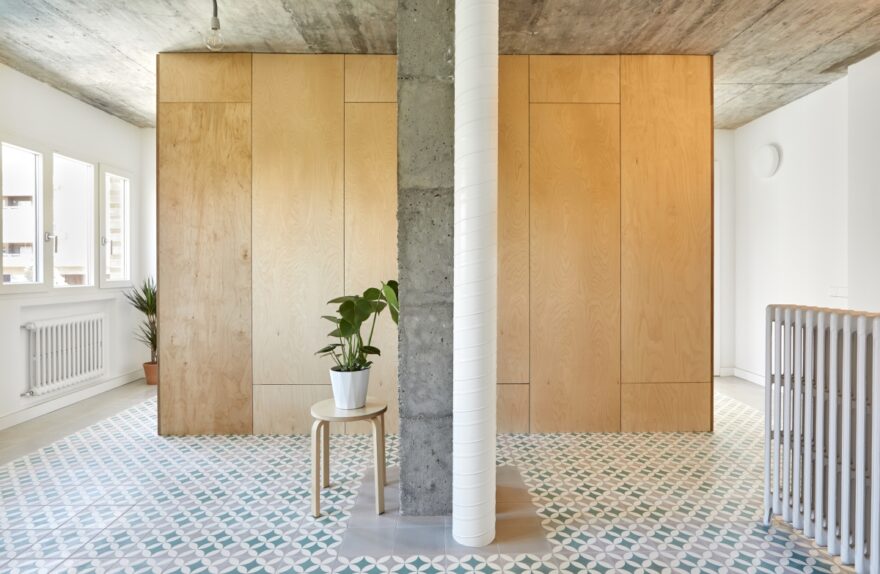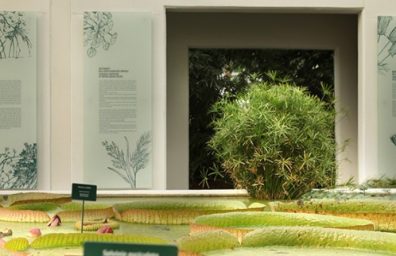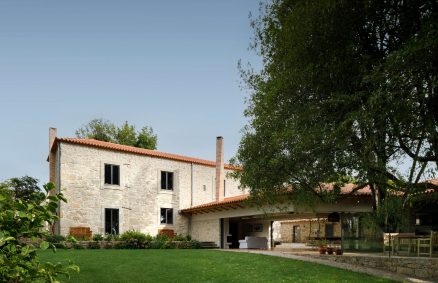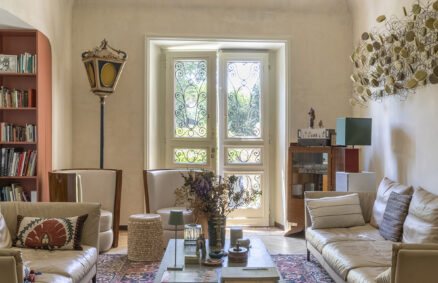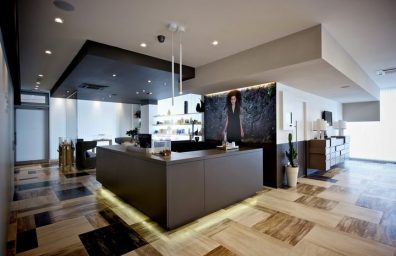The renovation of an apartment in Madrid in a residential neighborhood led to the creation of fluid and open spaces, integrating pipes and vertical structures without losing the height of the ceilings. Inspired by Paulista architecture, the use of hydraulic mosaic and exposed concrete ceiling helped create continuity and harmony.
The house is a roof, a floor and a piece of furniture. This is the concept that guided the Madrid-based architecture studio MINIMO in the renovation of an apartment in Madrid, located in a thirteen-story residential tower. The main challenge of the project was to make the original space, divided into different areas and not very flexible, fluid and open, integrating the numerous pipes and vertical structures typical of such a building in the design. All this without compromising the height of the ceilings and enhancing the natural light that permeates the perimeter of the apartment.
The solution was found by drawing inspiration from the clarity and warmth of the spaces of Paulista architecture, such as the Casa Butantã designed by P. Mendes da Rocha. In these spaces, the severity of the structures and visible finishes coexist harmoniously with carefully selected materials, such as wood and hydraulic mosaic.
Once the original partition walls were removed and the original structure of the apartment restored, the project developed around simple concepts. The main objective was to unify the main areas of the apartment through the use of a hydraulic mosaic floor. This element, together with the original reinforced concrete slab, creates a continuous space divided only by the birch wood kitchen cabinet, which becomes the only element to interrupt the horizontal vision of this area. In this way, the house becomes a floor, a roof and a piece of furniture.
The house becomes one floor when the living room, kitchen and dining room come together to form the central space of the apartment. The hydraulic mosaic floor was chosen to emphasize the continuity of this area, combining smooth tiles at the edges with geometric pieces in the centre. The hydraulic mosaic, with its geometric ornaments, has traditionally been used to delimit and reorganize compartmentalized spaces, giving them a regularity that the perimeter did not allow. In this way, the reference to Paulista and Mediterranean architecture helps to contain and organize the fluid space of the apartment through the use of color and geometry.
The second element that contributes to making the house fluid is the ceiling. The original concrete slab has been restored and left exposed, creating a continuity of materiality and height throughout the main space of the apartment. The ceiling loses its continuity only to define and differentiate the living area from the sleeping area, providing the necessary privacy. For this purpose, the bedrooms and bathrooms are accessed via two deep entrances where the roof height is reduced to 2,20 metres, thus emphasizing the transition from one area to another.
The second part of the apartment, more private, is organized in a simple way. The bedrooms are isolated from outside activity via a "strip" where entrances and a storage area are located. The bathrooms have been positioned in adjacent spaces, adapting to the position of the original systems and reducing the presence of pipes.
The only element that interrupts the horizontal vision between the two parallel levels (the geometric floor and the "bare" concrete ceiling) is the birch wood kitchen cabinet. In this way, the continuous space of the apartment is articulated through a single element which becomes the protagonist of the project. The kitchen cabinet completes the configuration of the fluid space, connecting and defining the accesses to the kitchen and laundry area.
Vertical pipes, radiators and uprights that interrupt the horizontal view are treated with simplicity and functionality. Both materials and finishes are used in their raw state, showing their irregularity. In this way, a fluid space is created which is articulated and ordered at the center thanks to geometry and colour.
The apartment in Madrid is an example of how an intelligent and creative transformation can transform an originally fragmented and inflexible space into a fluid and open environment. The use of the hydraulic mosaic, the exposed concrete ceiling and the birch wood kitchen unit help to create a feeling of continuity and harmony throughout the apartment. A project that demonstrates how the combination of contrasting materials and attention to detail can radically transform a living space, offering a new experience of living in harmony with the surrounding environment.
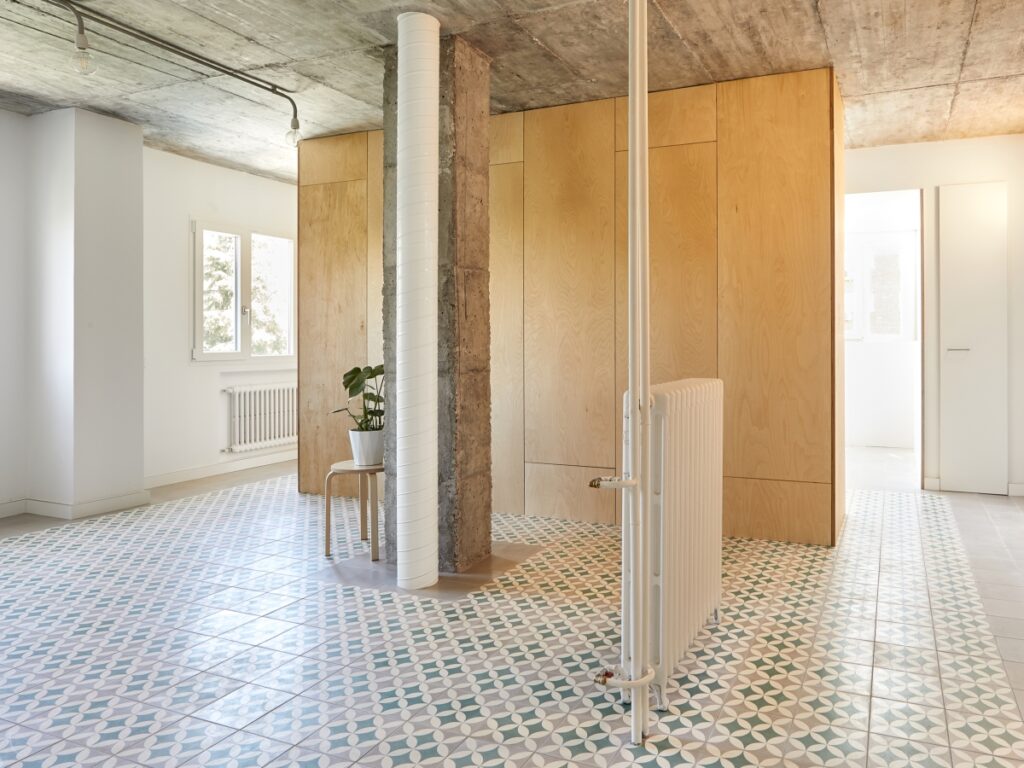
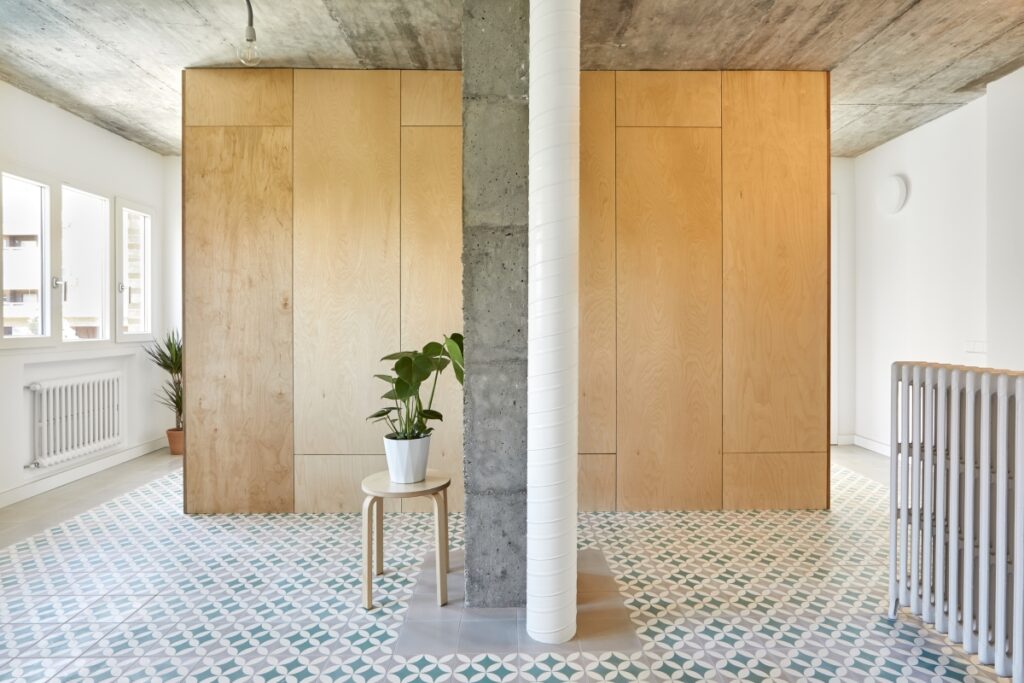
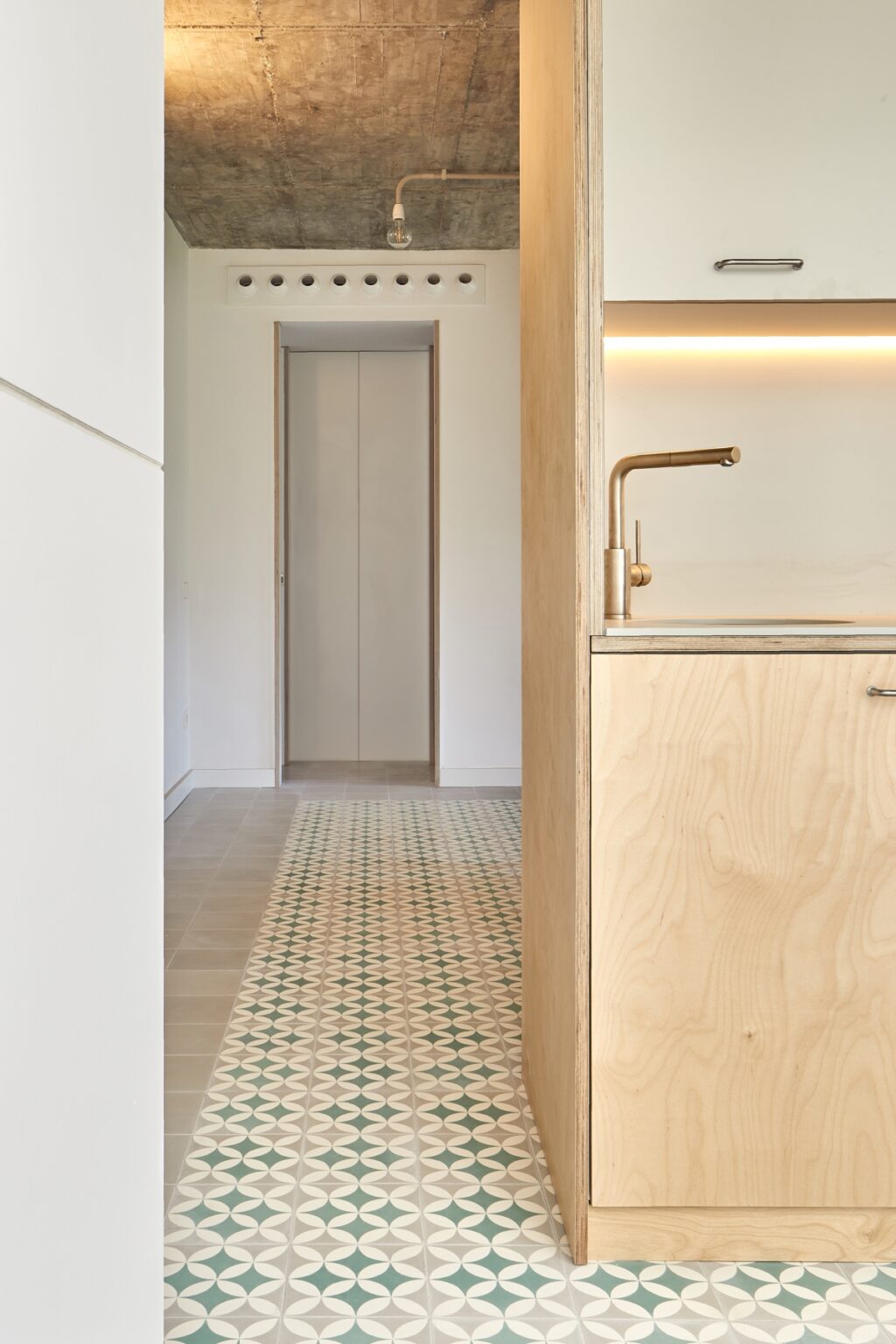
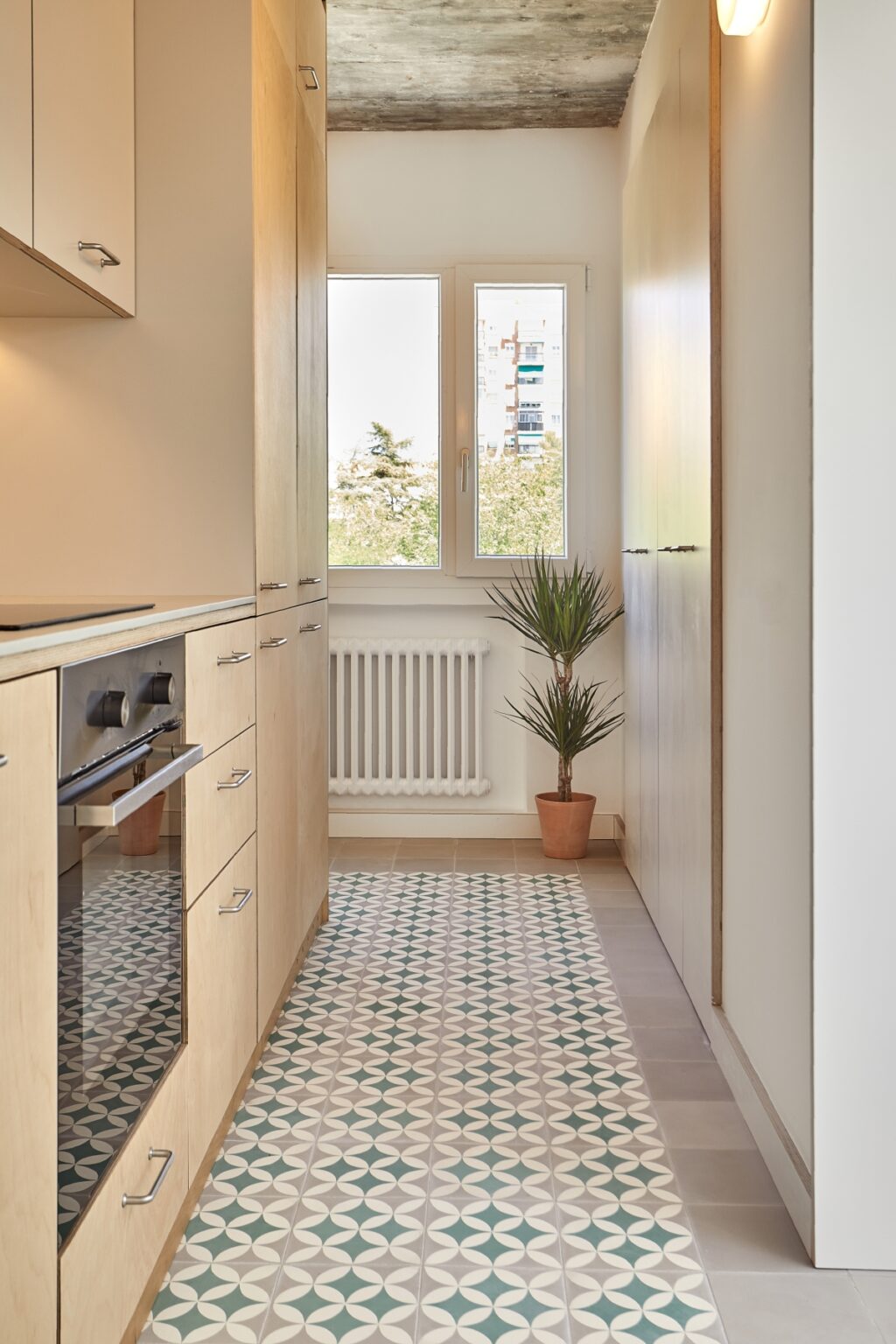
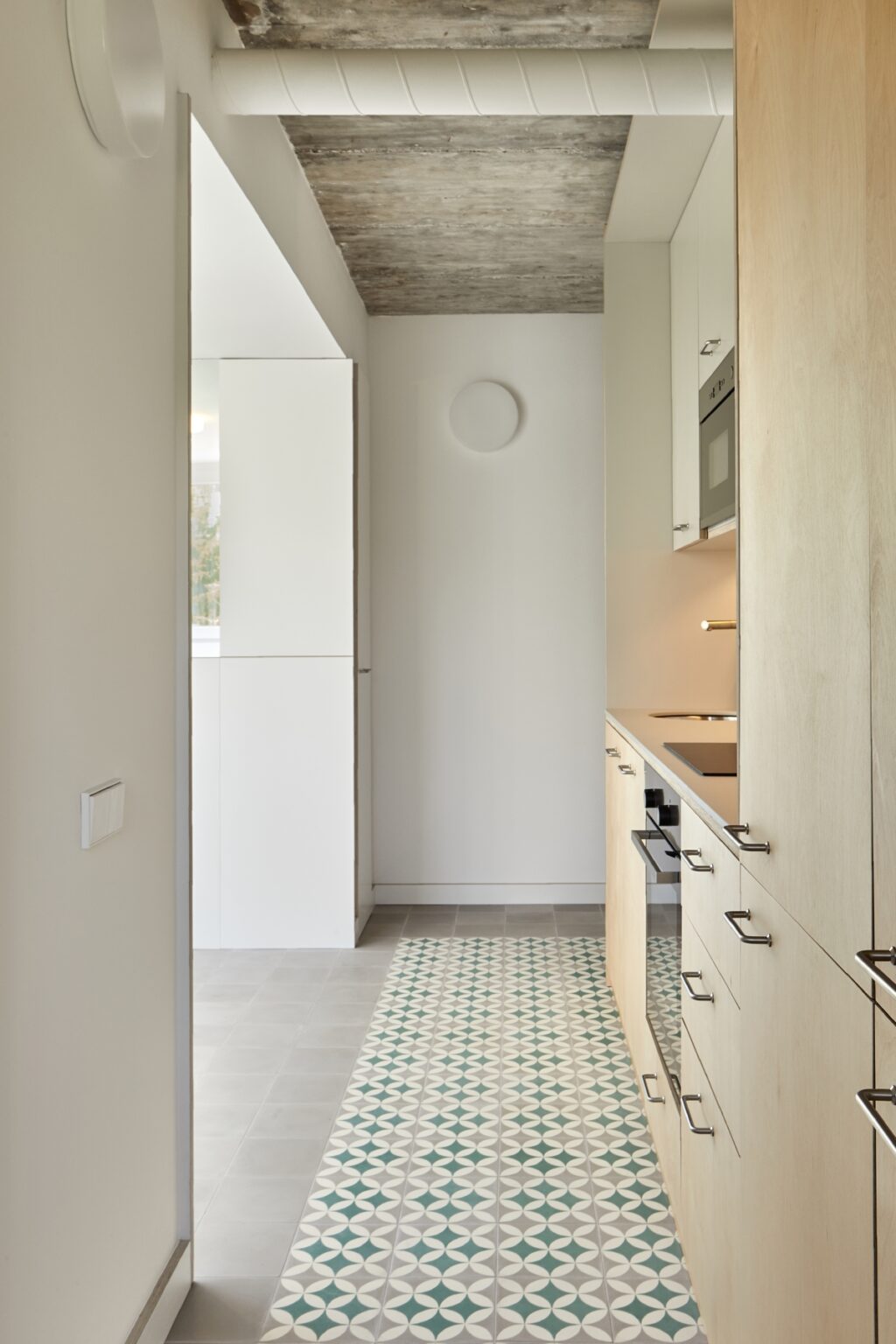
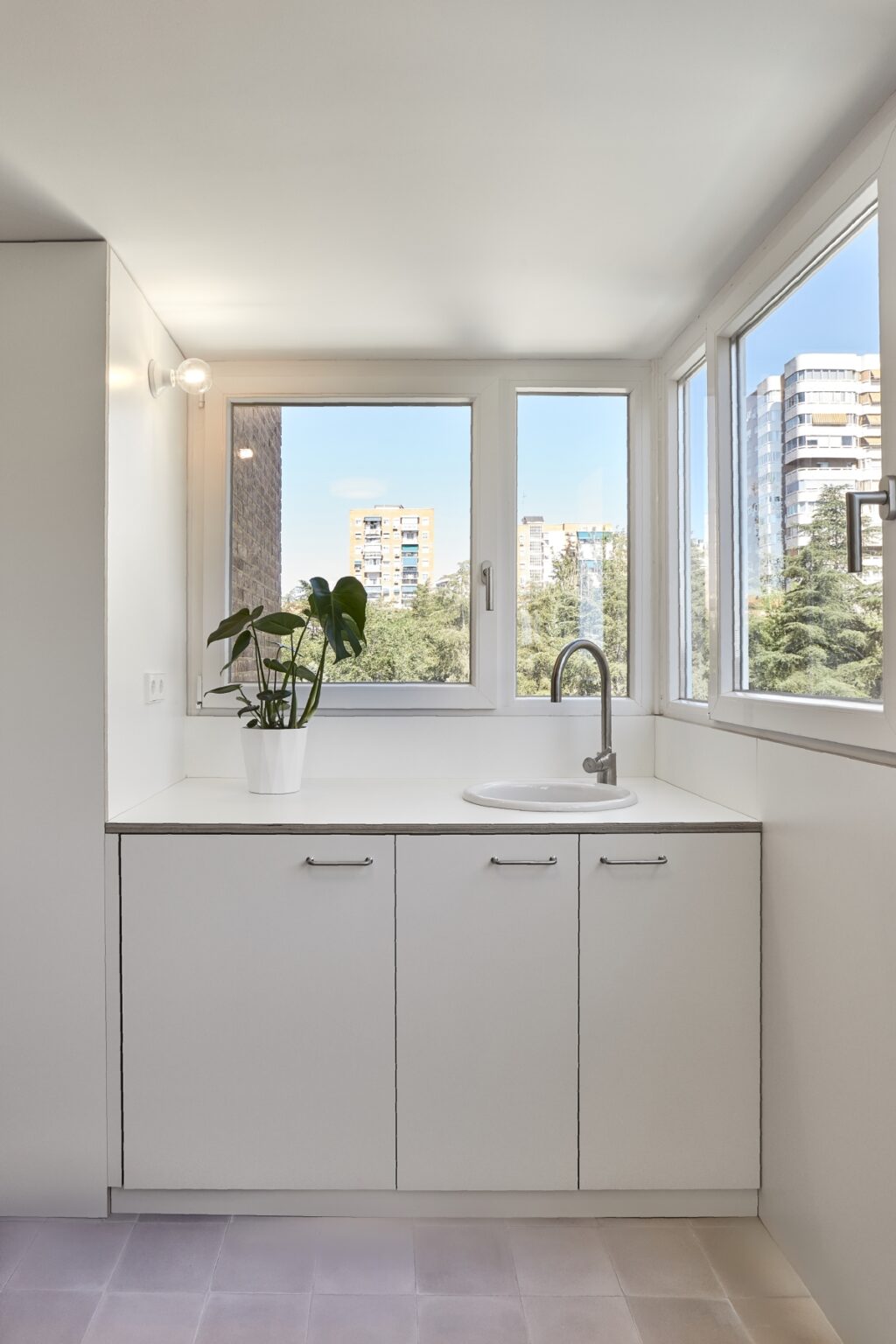
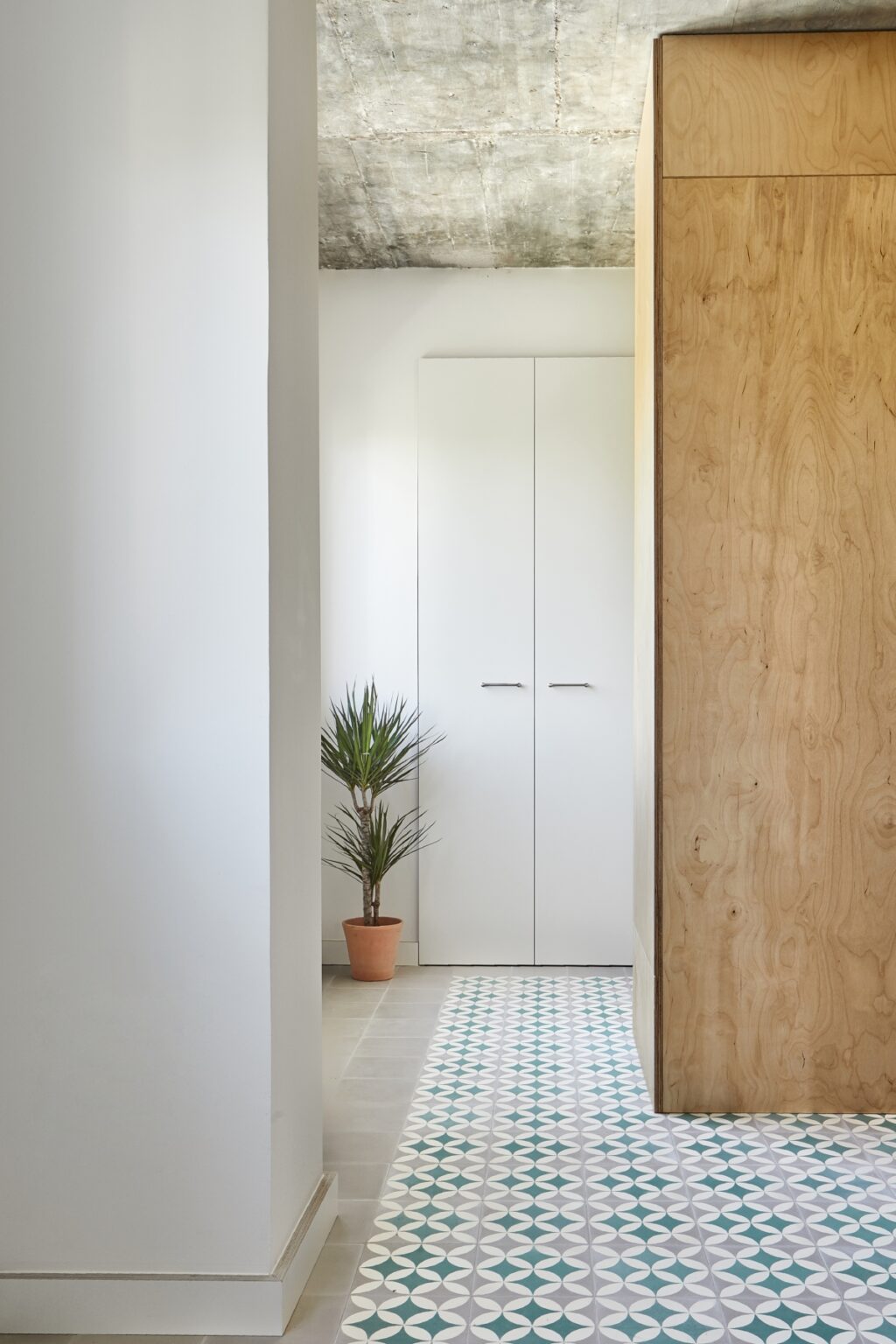
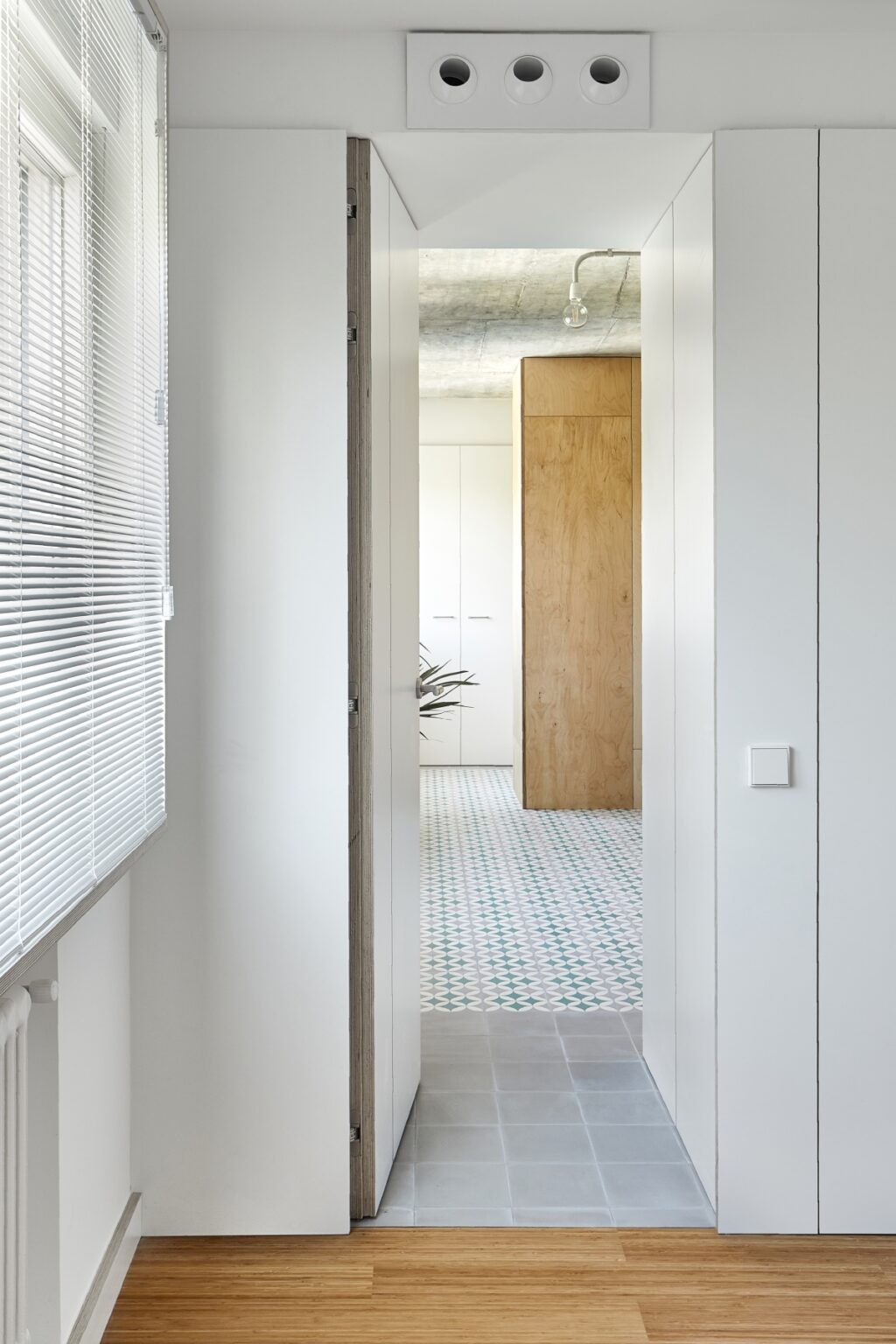
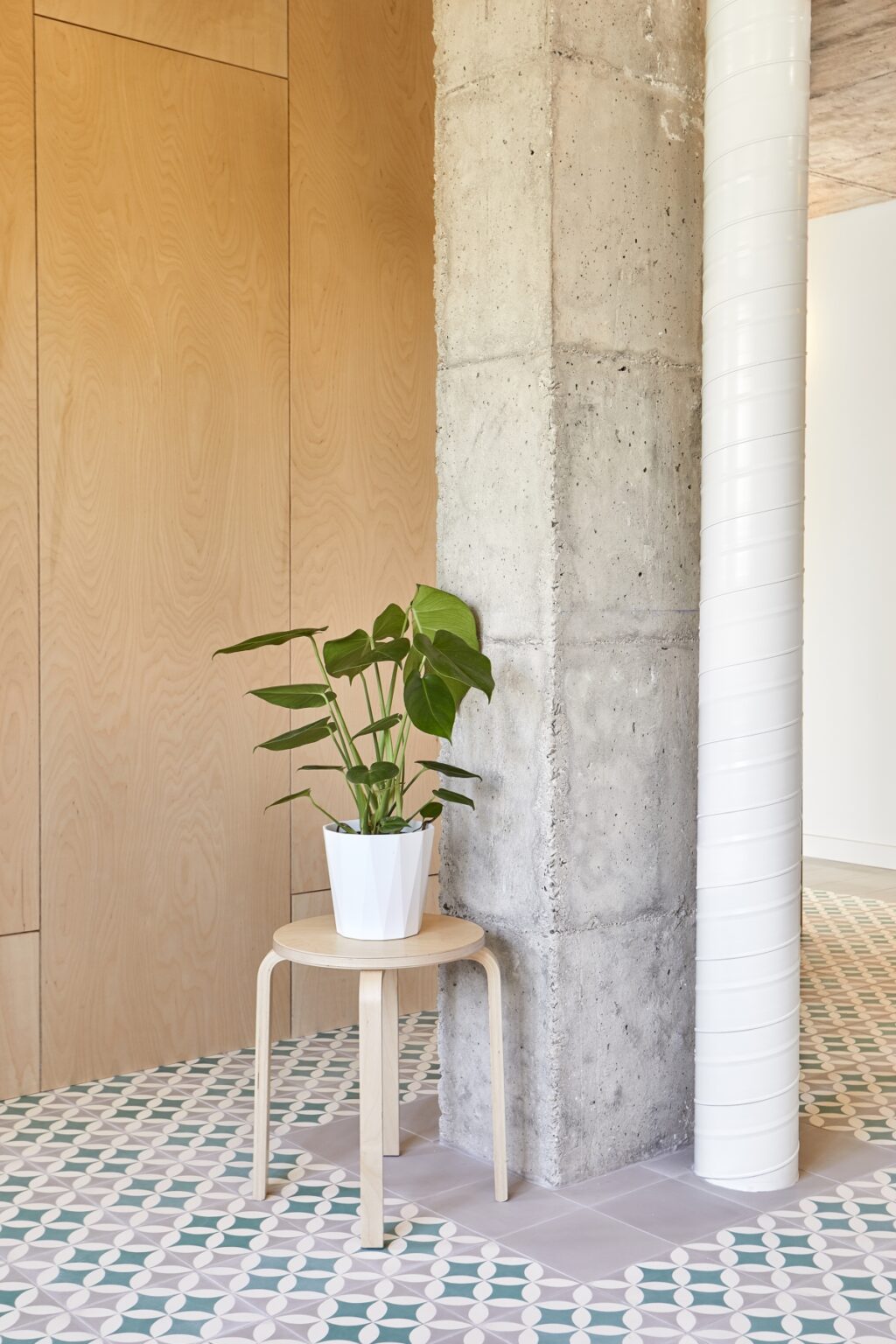
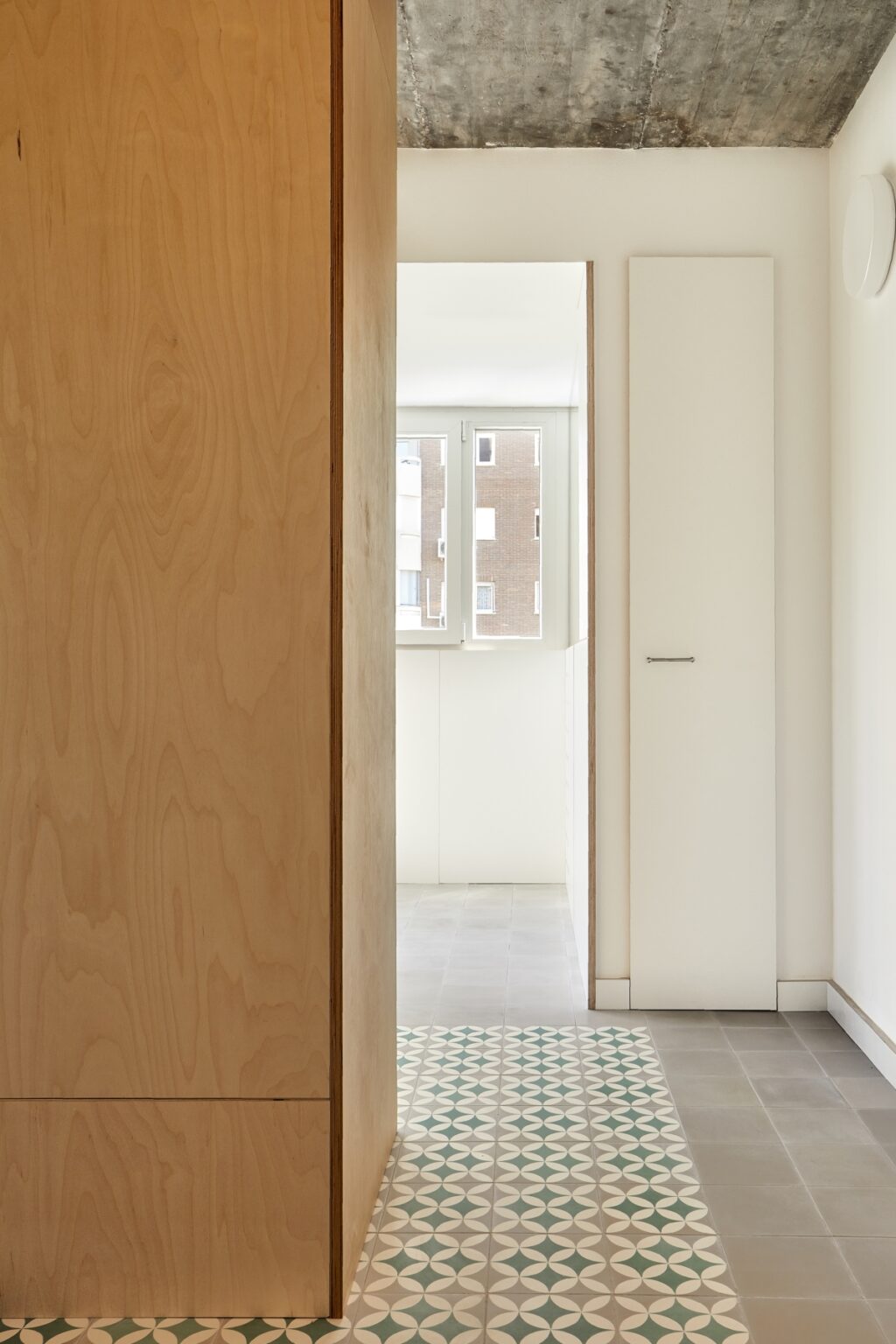
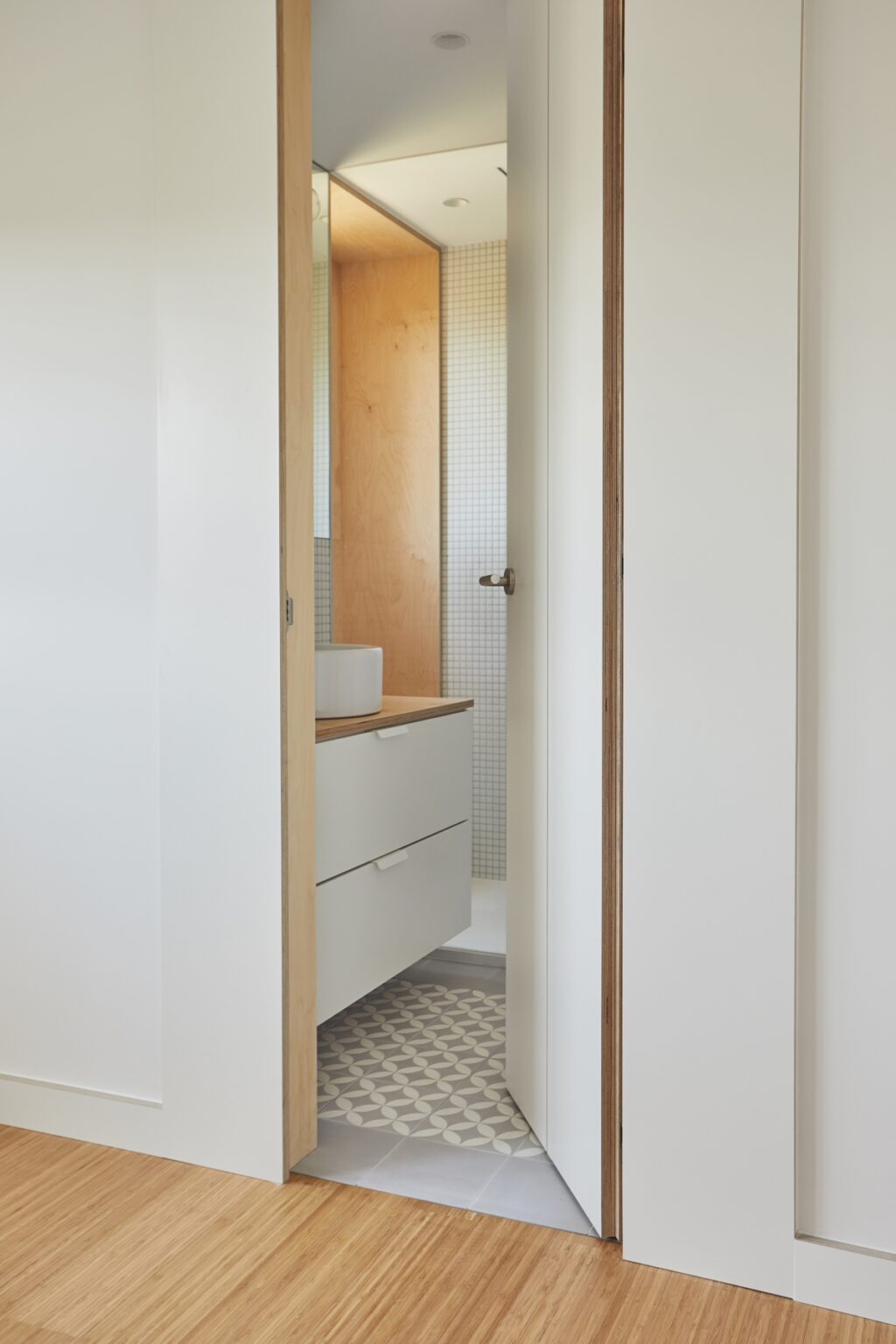
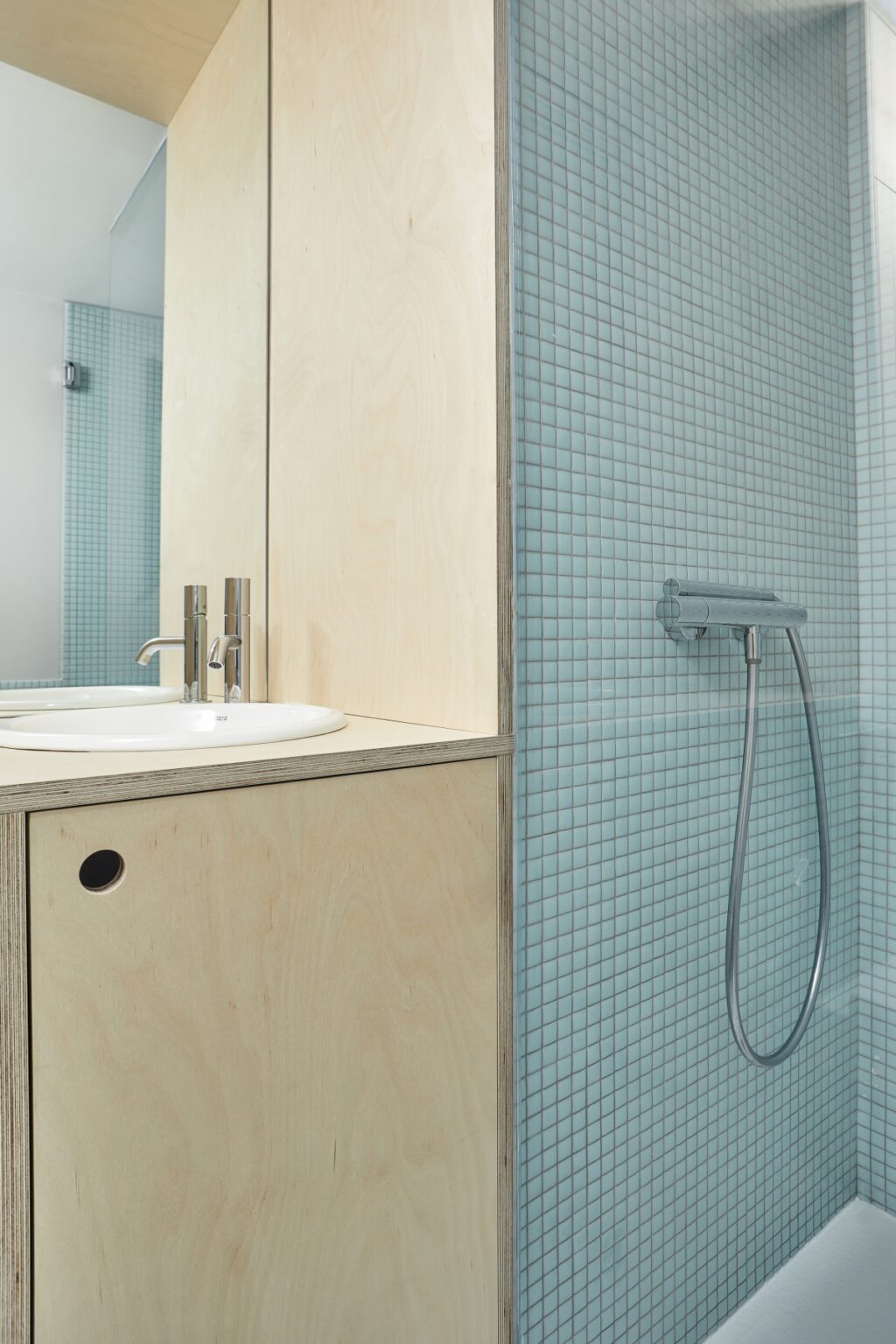
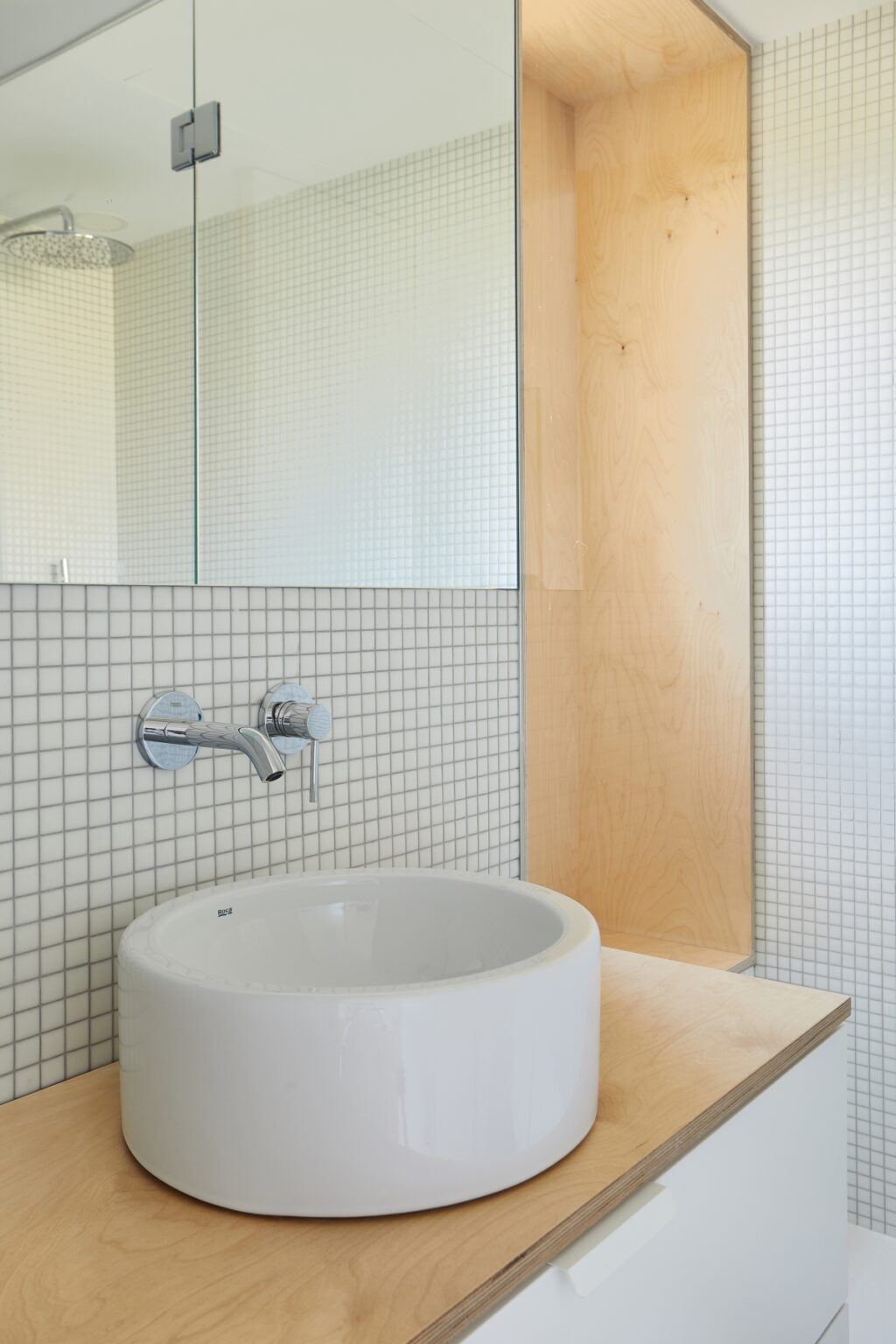
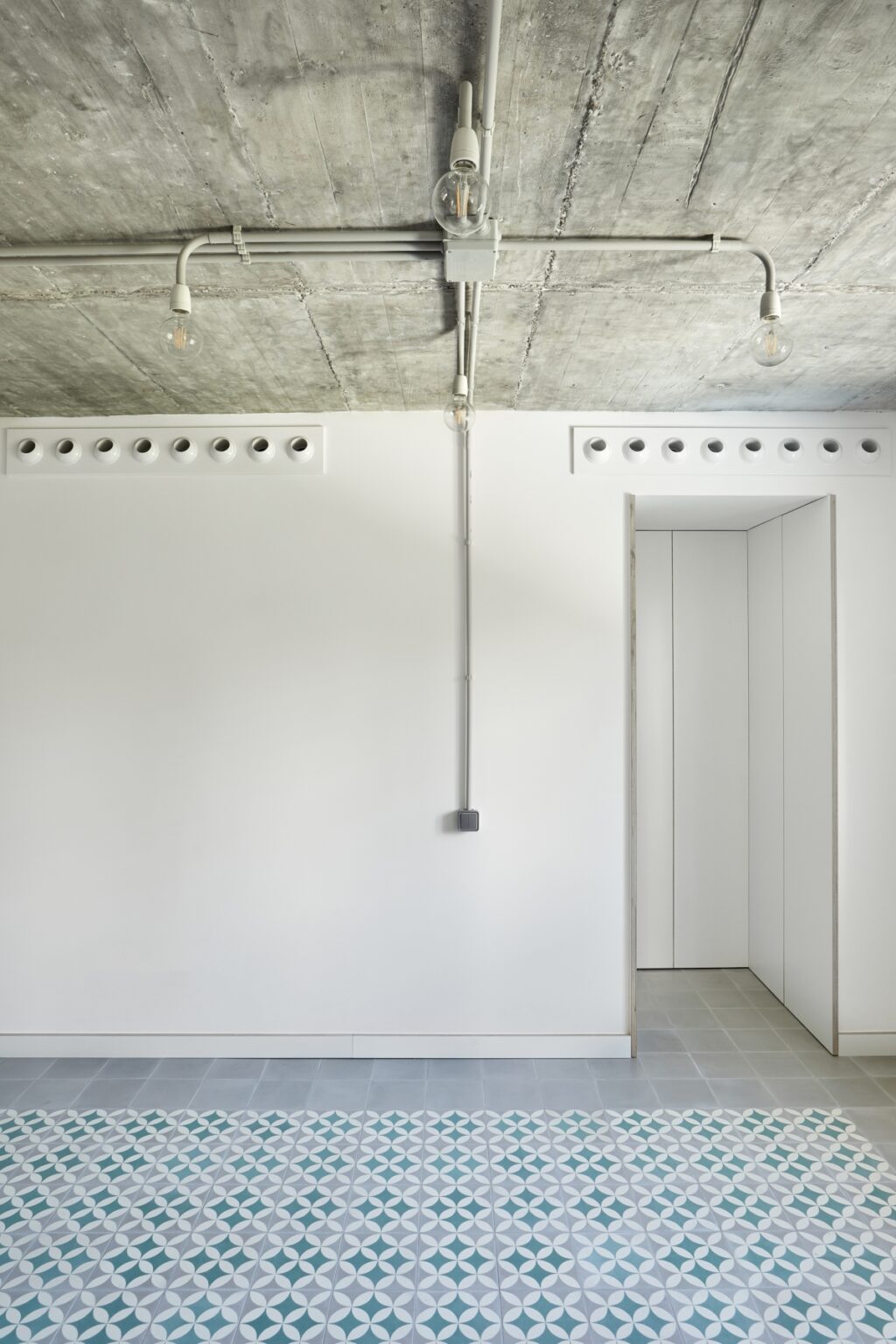
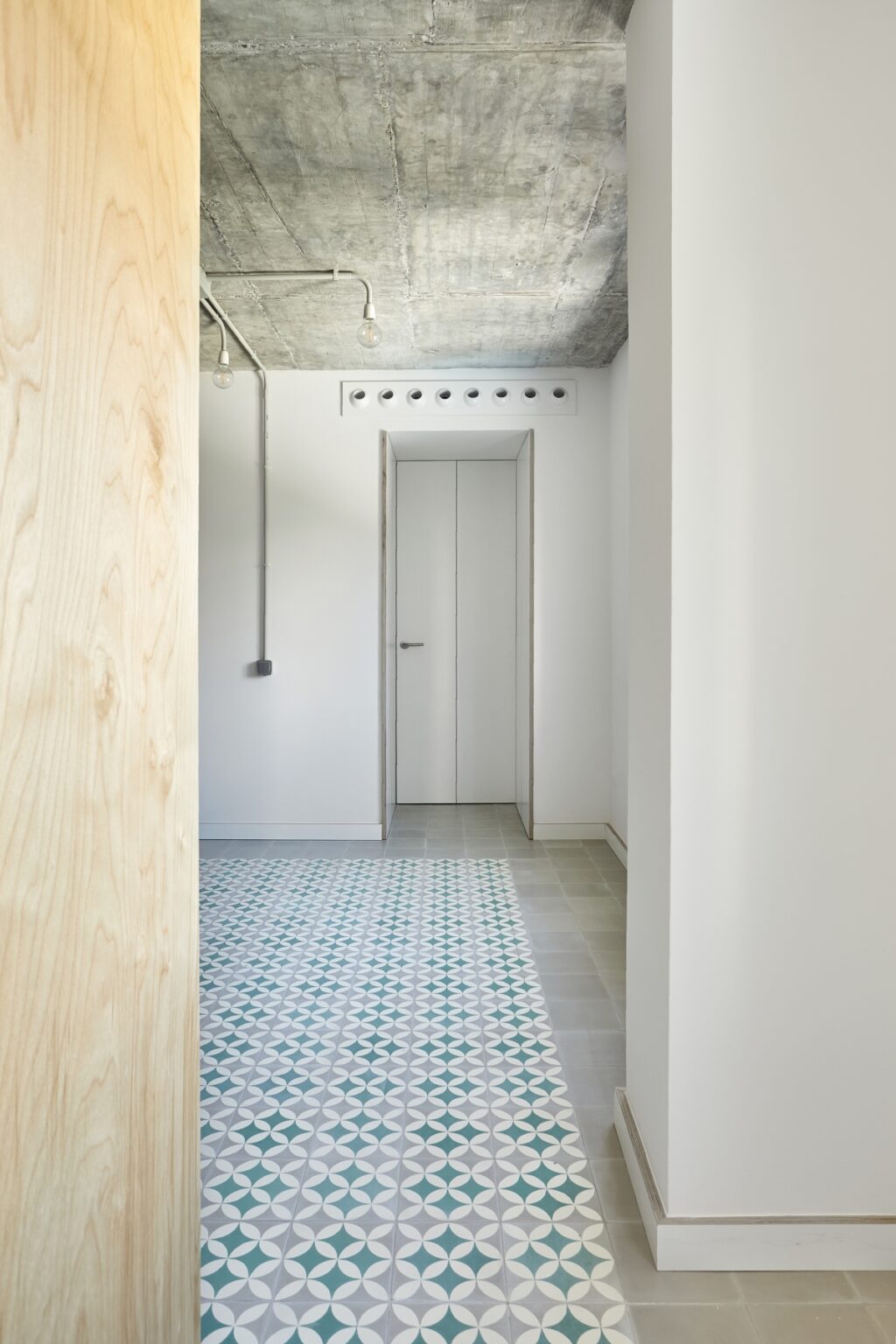
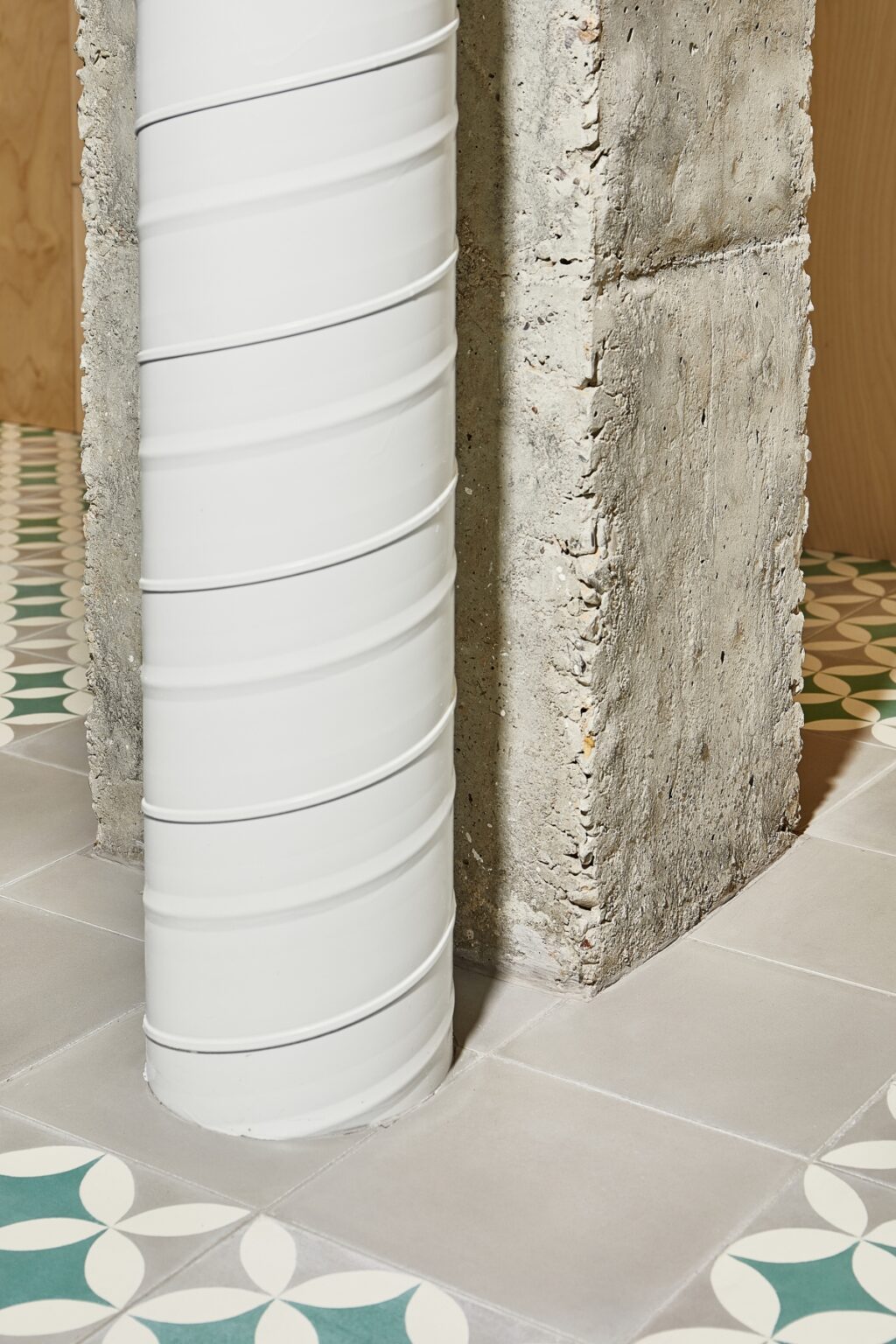
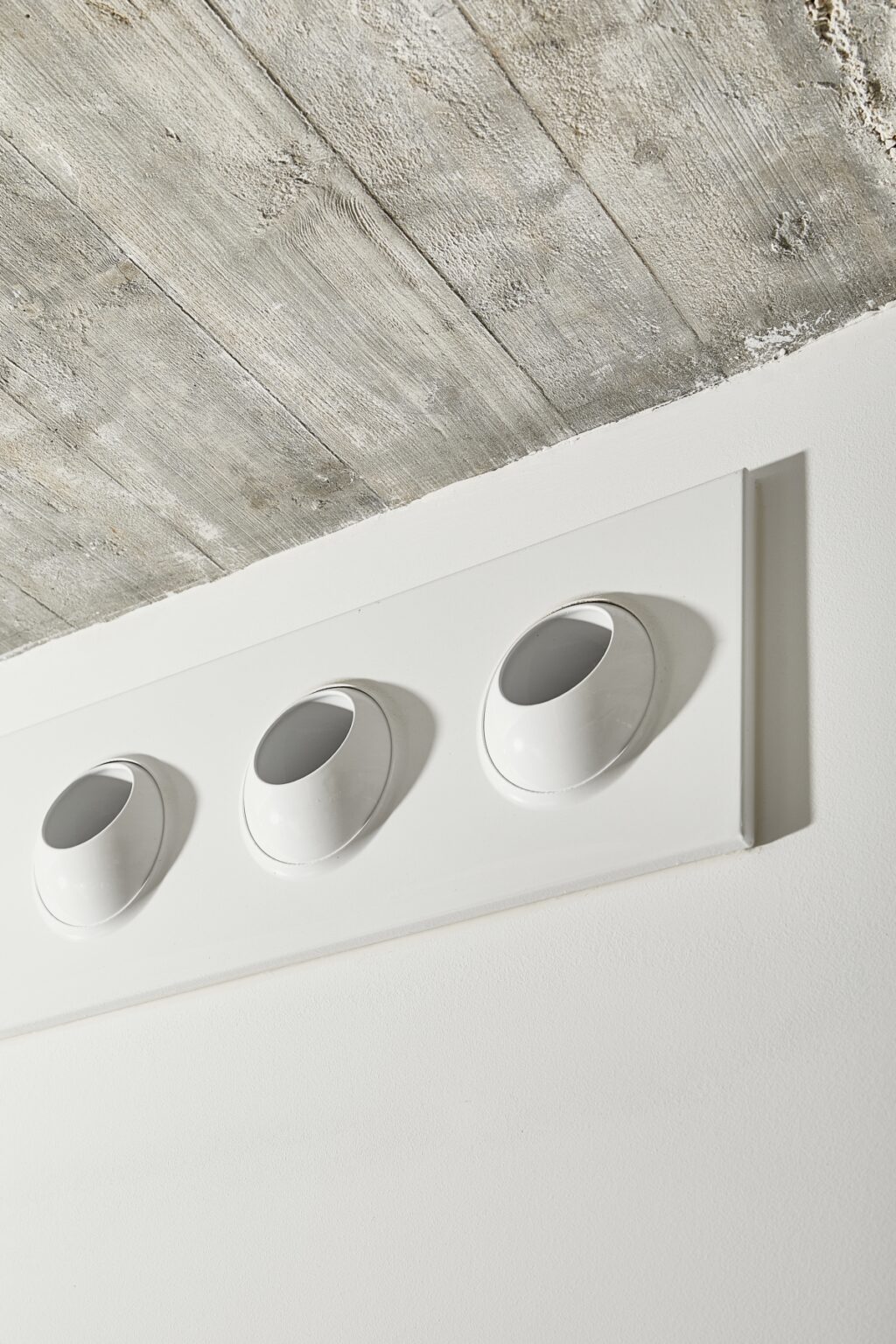
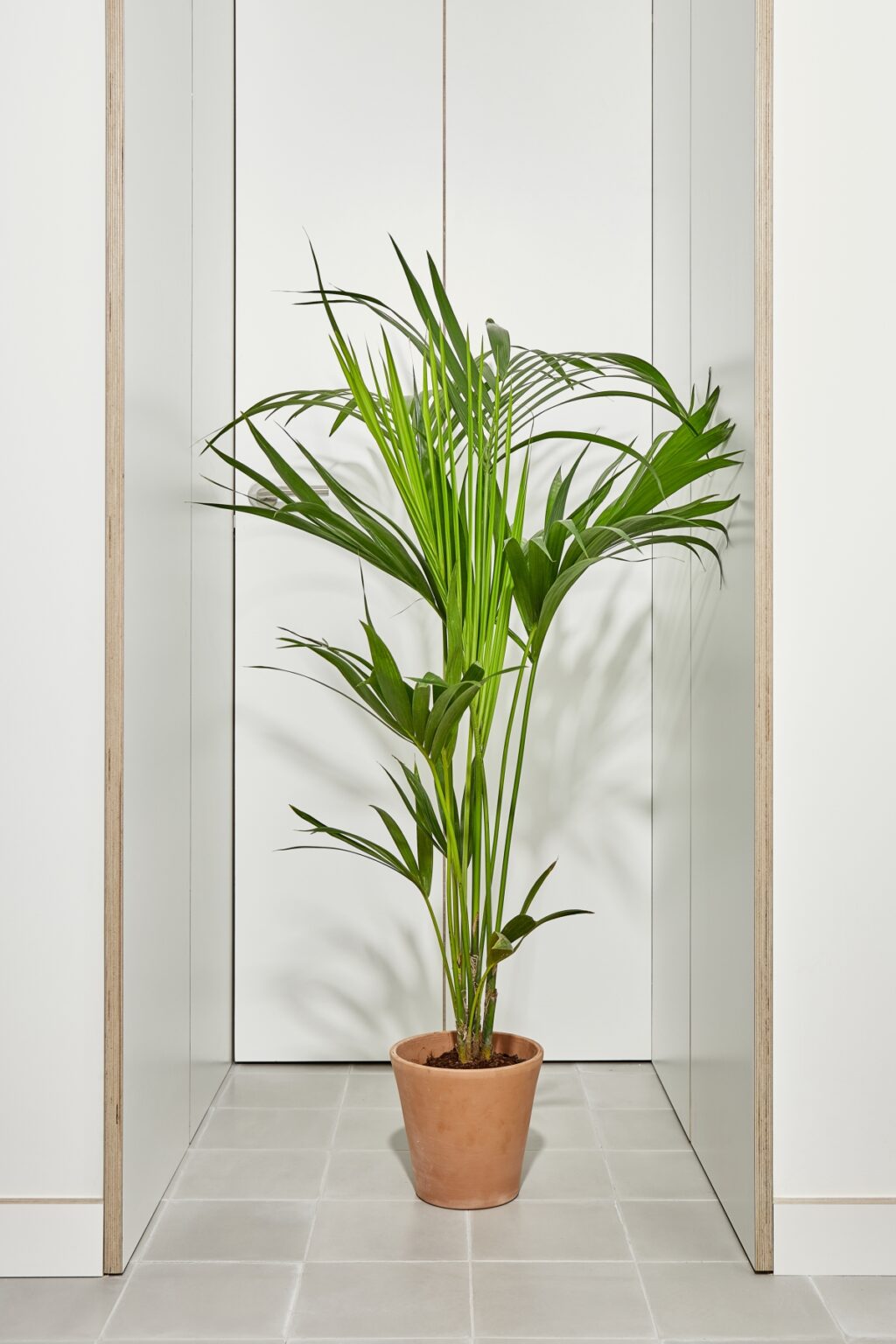
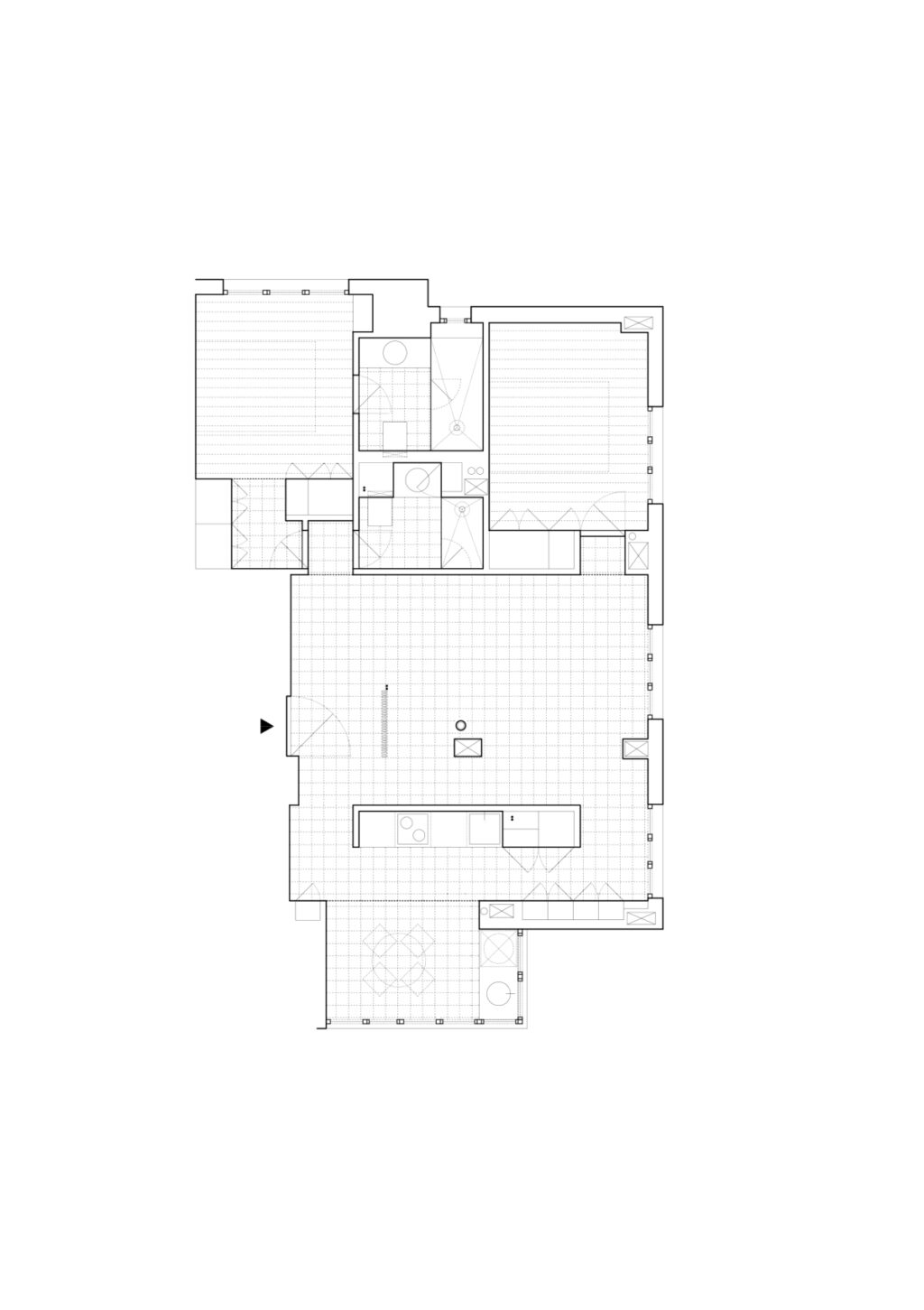
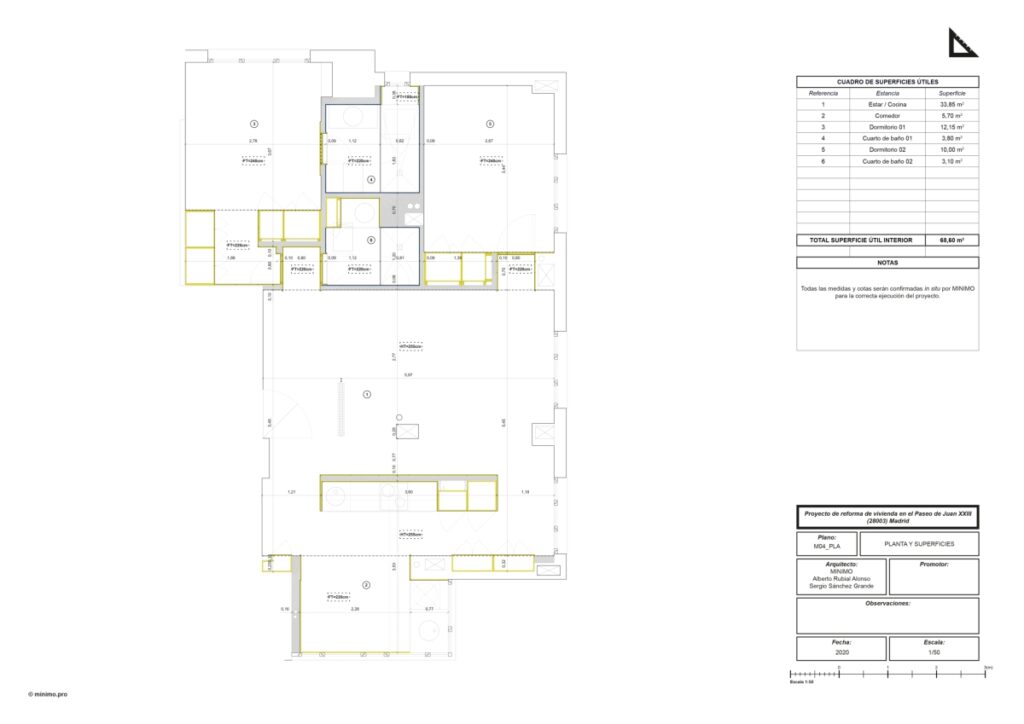
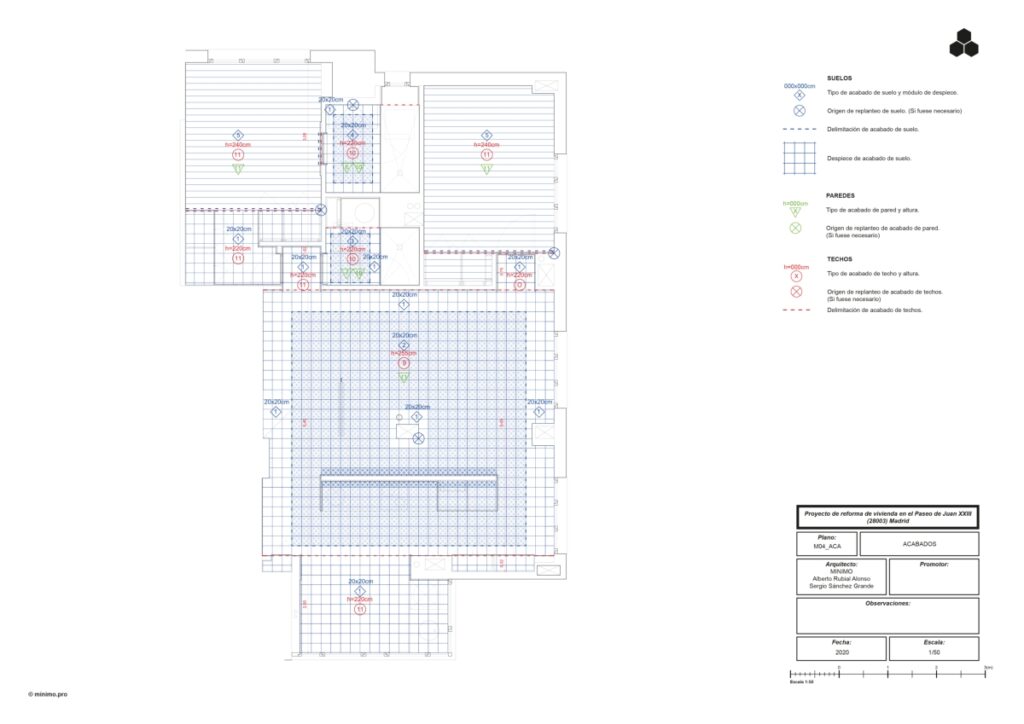
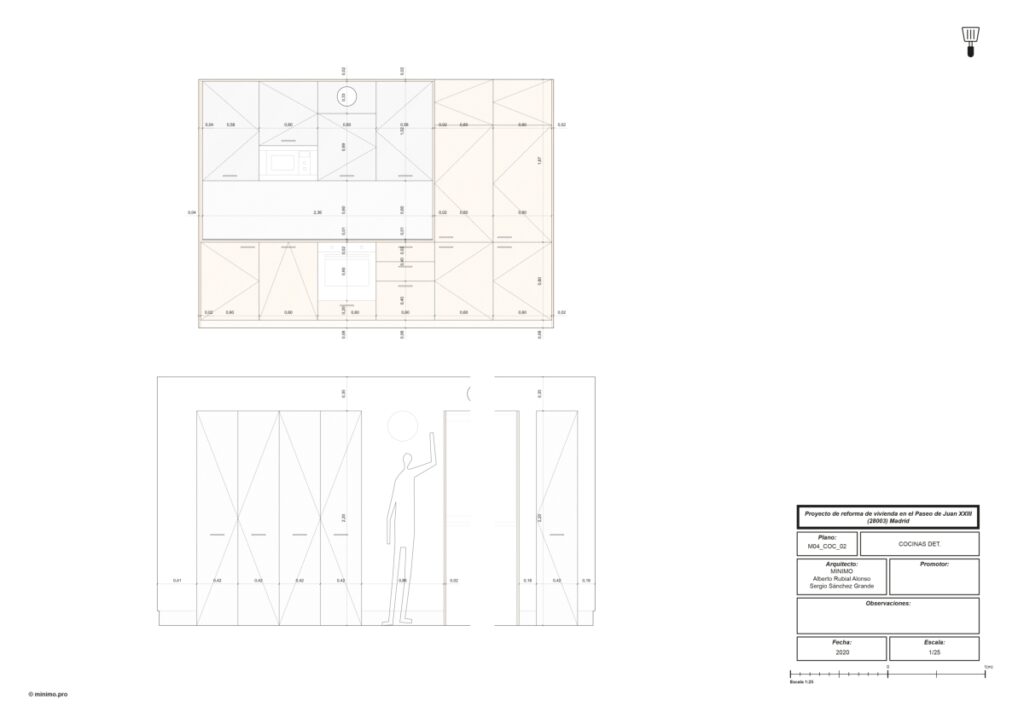
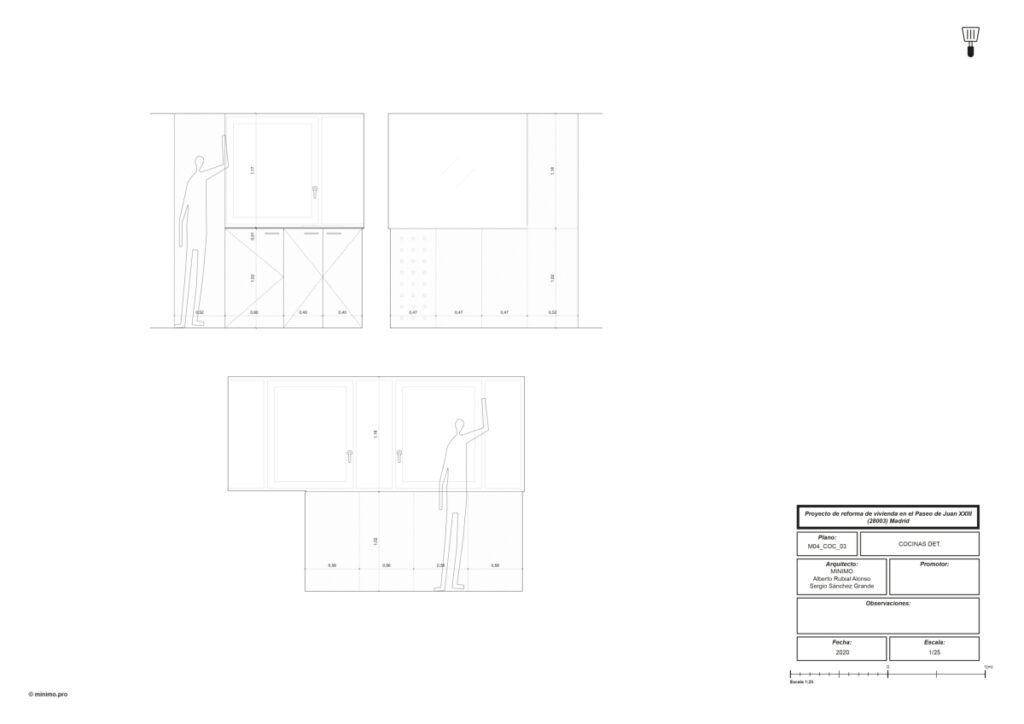
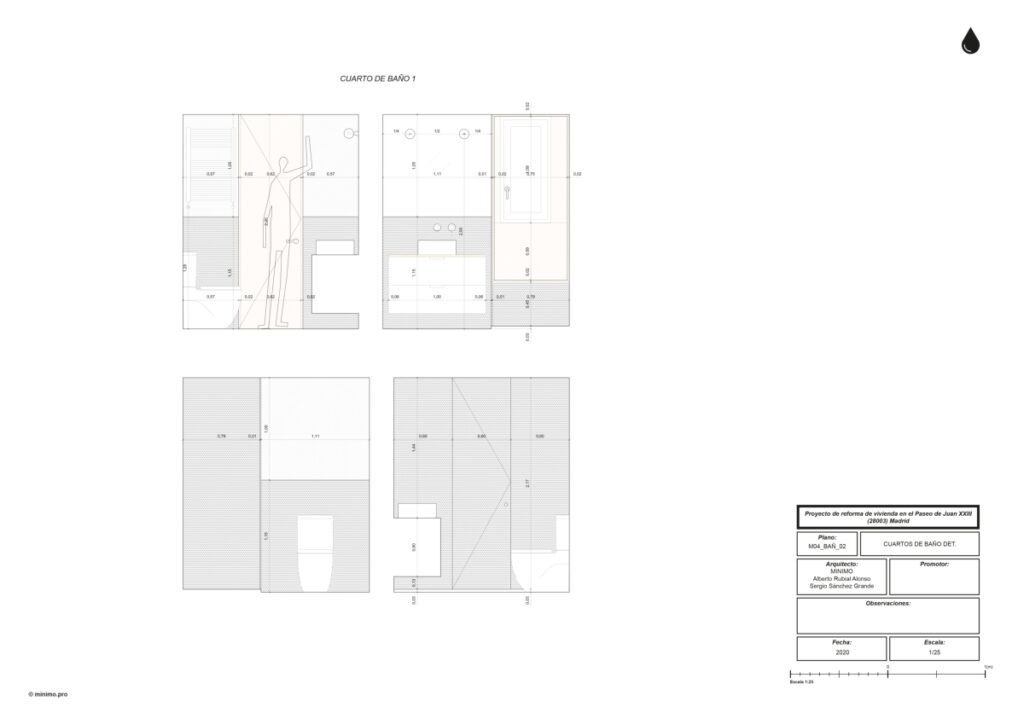
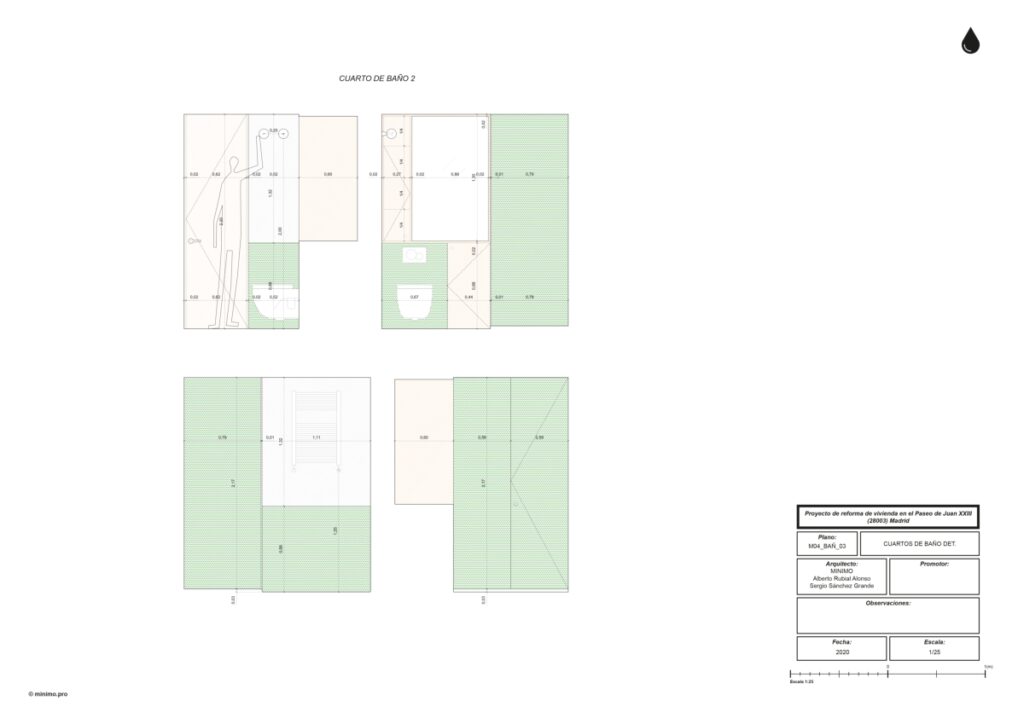
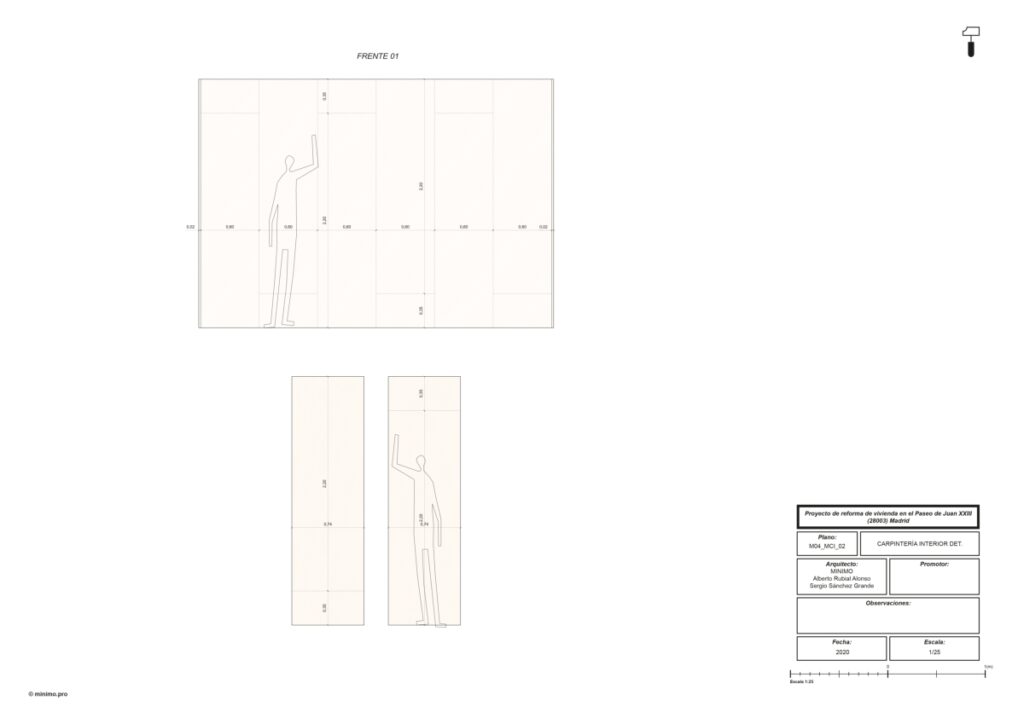
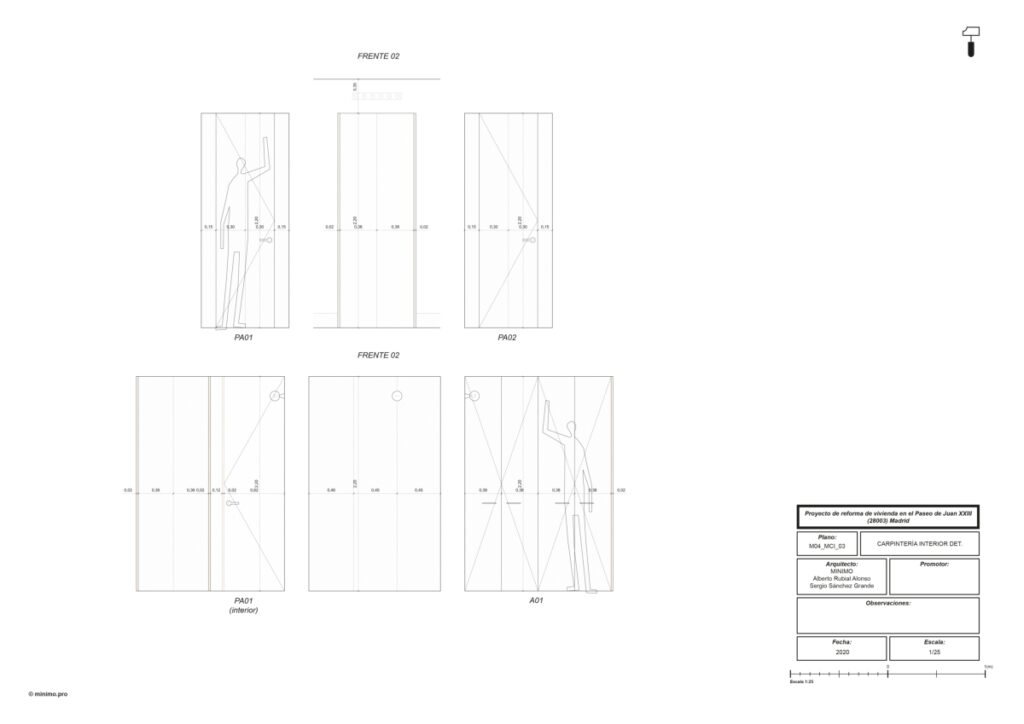
project info
Concept credits: ©minimum pro
Architectural project: ©minimum pro
Interior Design Project: ©minimum pro
Location: Madrid
Type: Residential
Area: 80 m²
Photo credits: David Ruiz

